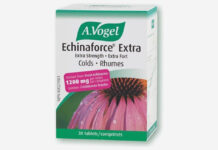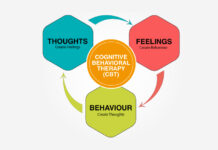
We see this in two of our recent studies (Sustainability 2019 which documents palpable concerns for environmental, waste and social welfare issues) and also in our Health + Wellness 2019 report which found that for the first time, stress had replaced being overweight as the top health condition America’s households are actively treating or preventing. The surge in the management of anxiety or stress is mostly driven by consumers preventing health conditions, especially among Millennials and now Gen Z. While Health + Wellness 2019 finds that weight is still seen as a key indicator of overall health, mental and emotional health are becoming more prominent aspects of how consumers understand health and wellness.
Our cultural focus on anxiety (and accompanying stress) are not exactly new. As tracked in our biannual health and wellness studies now dating back over 20 years, ever since our 2013 Health + Wellness report (A Culture of Wellness), dealing with stress and the ability to relax have gained in importance, while beliefs about physical health, spirituality, and natural diet have declined. 45% of consumers today say “being able to relax and have a good time” is a definition of health and wellness (up 6% since 2013). Similarly, “being able to deal with stress” is also a definition of health and wellness – acknowledged by 57% of consumers and up 4 points since 2013.
The surge in anxiety and stress is driven mainly by Millennials and now Gen Z. Higher levels of stress and anxiety among Gen Z—even above Millennials—suggest that this is a unique generational issue, rather than one related to life stage. Commenting in a Hartman Group podcast highlighting findings from our Health + Wellness 2019 report, Sarah Marion, Ph.D., Hartman Group Director of Syndicated Research said, “From what we heard from consumers and saw in the media, the cultural commentary right now calls us the age of anxiety because there’s this sense that we live in precipitous times, both at a micro and a macro level. So, young people are going to have to live with the fact of climate change, and there is a lot of kind of deeply felt guilt and dread and anxiety there because it’s this huge problem that feels like you need to do something and yet you have no idea what to do. We have the same sense in the kind of national political sphere. What is going to happen to the country? What is going to happen to the community? What is even going to happen to my family, in addition to, what’s going to happen to me?”
To cope with stress and anxiety as more pronounced health and wellness issues, consumers are adapting their beliefs and behaviors in different ways:
· Exercise today is viewed as critical to managing mental health and mood —a major change from the past, when it was mainly about physical health. In previous decades the primary motivation for exercising was often physical appearance, with physical health as a bonus and mental health an afterthought.
· As consumers increasingly understand H+W through the metaphors of anxiety and stress, mindfulness has emerged as central to all H+W. Mindfulness means being both attentive and intentional about one’s needs and desires—physical, mental, emotional, social, and spiritual.
· Among younger consumers: CBD (and cannabinoid-related) products appeal because younger consumers are looking for ways to relax, de-stress, and get to sleep. Gen Z and Millennials are interested in both natural remedies to everyday physical and mental issues and functional foods and beverages.
Source: www.hartman-group.com











